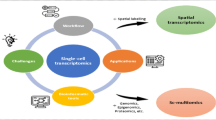Abstract
Telomere length (TL) is currently used as an emerging biomarker in understanding the development/progression of hematological malignancies. The absolute quantitative PCR (qPCR) methodology has allowed the study of TL from a variety of mammalian tissues, but it has not been tested for bone marrow (BM) samples. In this study, we have examined the relationship between TL data generated by absolute qPCR versus those obtained by terminal restriction fragments (TRF) in 102 BM samples from patients with plasma cell disorders. A significant linear correlation between both methodologies was observed (p < 0.0001; r 2 = 0.70). Results were also analyzed in relation to clinical characteristics and significant associations between telomere shortening and parameters of adverse prognosis were observed. Furthermore, another set of 47 BM samples from patients with low quantity of DNA for TRF assay were suitably analyzed by qPCR, indicating the usefulness of the absolute qPCR methodology for the inclusion of patients with scarce material to the study. Taken together, these findings are of interest considering the importance of telomere dysfunction in the pathogenesis of cancer and give a new alternative to measure TL in hematologic disorders with substantial time and cost savings.


Similar content being viewed by others
References
Counter, C. M., Avilion, A. A., LeFeuvre, C. E., et al. (1992). Telomere shortening associated with chromosome instability is arrested in immortal cells which express telomerase activity. EMBO Journal, 11, 1921–1929.
Wu, X., Amos, C. I., Zhu, Y., et al. (2003). Telomere dysfunction: A potential cancer predisposition factor. Journal of the National Cancer Institute, 95, 1211–1218.
Hahn, W. C. (2003). Role of telomeres and telomerase in the pathogenesis of human cancer. Journal of Clinical Oncology, 21, 2034–2043.
Stewart, S. A., & Weinberg, R. A. (2006). Telomeres: Cancer to human aging. Annual Review of Cell and Developmental Biology, 22, 531–557.
Allshire, R. C., Dempster, M., & Hastie, N. D. (1989). Human telomeres contain at least three types of G-rich repeat distributed non-randomly. Nucleic Acids Research, 17, 4611–4627.
Cawthon, R. M. (2002). Telomere measurement by quantitative PCR. Nucleic Acids Research, 30, e47.
O’Callaghan, N., Dhillon, V., Thomas, P., & Fenech, M. (2008). A quantitative real-time PCR method for absolute telomere length. BioTechniques, 44, 807–809.
O’Callaghan, N., & Fenech, M. (2011). A quantitative PCR method for measuring absolute telomere length. Biological Procedures Online, 13, 3.
Folini, M., Venturini, L., Cimino-Reale, G., & Zaffaroni, N. (2011). Telomeres as targets for anticancer therapies. Expert Opinion on Therapeutic Targets, 15, 579–593.
Greipp, P. R., San Miguel, J., Durie, B. G., et al. (2005). International staging system for multiple myeloma. Journal of Clinical Oncology, 23, 3412–3420.
Cottliar, A., Pedrazzini, E., Corrado, C., Engelberger, M. I., Narbaitz, M., & Slavutsky, I. (2003). Telomere shortening in patients with plasma cell disorders. European Journal of Haematology, 71, 334–340.
Baird, D. M. (2005). New developments in telomere length analysis. Experimental Gerontology, 40, 363–368.
Wu, K. D., Orme, L. M., Shaughnessy, J, Jr, Jacobson, J., Barlogie, B., & Moore, M. A. (2003). Telomerase and telomere length in multiple myeloma: Correlations with disease heterogeneity, cytogenetic status, and overall survival. Blood, 101, 4982–4989.
Panero, J., Arbelbide, J., Fantl, D., Rivello, H. G., Kohan, D., & Slavutsky, I. (2010). Altered mRNA expression of telomere-associated genes in monoclonal gammopathy of undetermined significance and multiple myeloma. Molecular Medicine, 16, 471–478.
Jones, C. H., Pepper, C., & Baird, D. M. (2012). Telomere dysfunction and its role in haematological cancer. British Journal of Haematology, 156, 573–587.
Acknowledgments
This work was supported by Grants from the National Research Council (CONICET), the National Agency of Scientific and Technical Promotion (ANPCyT), and the Bunge and Born Foundation.
Conflict of interest
No competing financial interests exist.
Author information
Authors and Affiliations
Corresponding author
Electronic supplementary material
Below is the link to the electronic supplementary material.
Rights and permissions
About this article
Cite this article
Panero, J., O’Callaghan, N.J., Fenech, M. et al. Absolute qPCR for Measuring Telomere Length in Bone Marrow Samples of Plasma Cell Disorders. Mol Biotechnol 57, 155–159 (2015). https://doi.org/10.1007/s12033-014-9811-8
Published:
Issue Date:
DOI: https://doi.org/10.1007/s12033-014-9811-8




